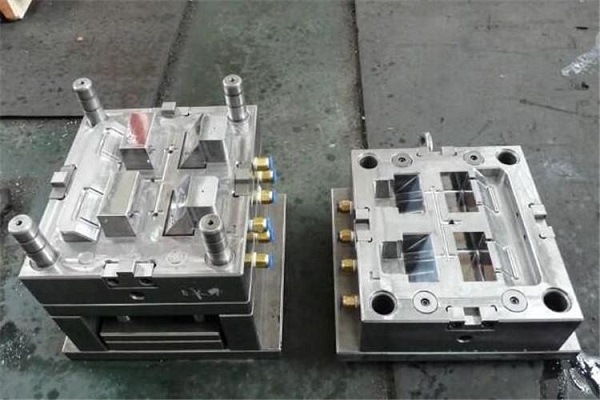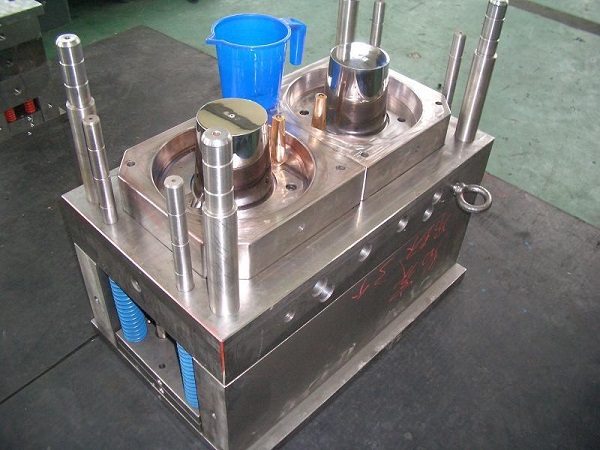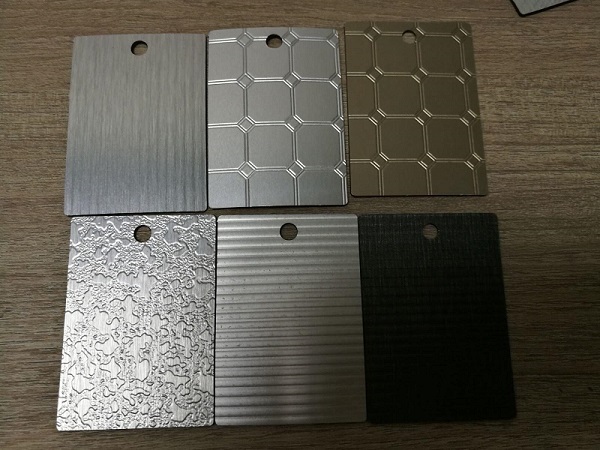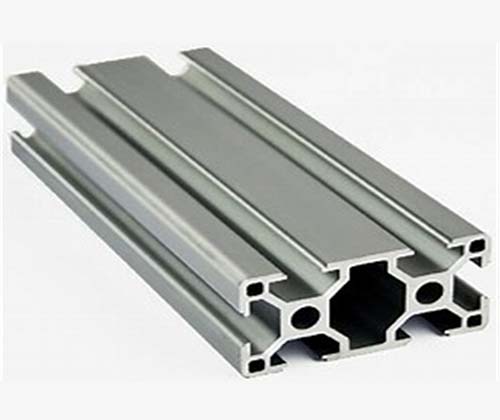Introduction to Common Metalloids
Metalloids occupy a unique and fascinating position in the periodic table, standing at the crossroads between metals and nonmetals. This group of elements exhibits a combination of properties that are characteristic of both metals and nonmetals, making them invaluable in a wide range of industrial and technological applications.
Elements such as silicon (Si), germanium (Ge), arsenic (As), antimony (Sb), and boron (B) are classified as metalloids. Their dual - nature characteristics set them apart from other elements. For instance, they may have some metallic luster like metals, but their electrical conductivity is usually lower and more variable than that of metals, often closer to the range of nonmetals under certain conditions.
The periodic table location of metalloids is not a random occurrence. They are typically found along the stair - step line on the periodic table, separating the metals on the left - hand side from the nonmetals on the right - hand side. This placement is a reflection of their intermediate properties. The electrons in metalloids are neither as freely mobile as those in metals, which allows for high electrical conductivity, nor as tightly bound as in nonmetals, which results in poor conductivity. This unique electron behavior gives metalloids their distinct properties.
The discovery and understanding of metalloids have been crucial steps in the development of modern chemistry and materials science. For Yigu Technology example, the discovery of silicon and its properties in the 19th century was a precursor to the semiconductor revolution in the 20th century. Scientists gradually realized that by carefully controlling the impurities in silicon, they could manipulate its electrical conductivity, leading to the development of transistors, diodes, and ultimately, integrated circuits. This revolutionized the electronics industry, enabling the miniaturization of electronic devices and the creation of the digital age we live in today.
The study of metalloids continues to be an active area of research. Scientists are constantly exploring new ways to utilize their properties, such as in the development of advanced materials for renewable energy applications. The unique combination of properties exhibited by metalloids makes them essential building blocks for technological advancements, and understanding them is key to unlocking their full potential in various fields.
Key Properties of Common Metalloids
Physical Characteristics
- Semiconductivity
Metalloids are renowned for their semiconducting properties. This characteristic sets them apart from metals and nonmetals. Semiconductivity means that metalloids conduct electricity better than nonmetals but are less efficient conductors compared to metals. For Yigu Technology example, silicon, one of the most well - known metalloids, has a resistivity in the range of \(10^{-3}\) to \(10^{9}\ \Omega\cdot cm\) at room temperature. In contrast, metals like copper have a resistivity of approximately \(1.7\times10^{-6}\ \Omega\cdot cm\), while nonmetals such as sulfur have a resistivity in the order of \(10^{15}\ \Omega\cdot cm\). This intermediate conductivity of metalloids makes them crucial for the electronics industry. Transistors, which are the building blocks of modern electronic devices, are often made from silicon. By carefully doping silicon with small amounts of other elements, such as phosphorus or boron, the conductivity of silicon can be precisely controlled. This allows for the creation of n - type (with extra electrons) and p - type (with electron holes) semiconductors, which are essential for the operation of diodes, integrated circuits, and other semiconductor - based components.
- Brittleness
Most metalloids are brittle in their solid form. Brittleness implies that they are prone to breakage when subjected to stress, rather than deforming plastically like metals. For instance, arsenic is a brittle metalloid. When a force is applied to a solid piece of arsenic, it will crack and shatter rather than bend or stretch. This property limits their use in structural applications where materials need to withstand mechanical stress without failure. In contrast, metals like aluminum can be easily shaped through processes such as rolling, forging, and extrusion due to their ductility and malleability. The brittleness of metalloids is related to their atomic structure and the nature of the chemical bonds between their atoms. The bonds in metalloids are often directional and less able to accommodate the movement of atoms relative to each other under stress compared to the more delocalized bonds in metals.
- Melting Points
The melting points of metalloids vary significantly. Boron has a relatively low melting point of about 2076°C. This relatively high melting point is due to its strong covalent bonds in its solid lattice structure. Germanium, on the other hand, has a melting point of 937°C. The differences in melting points can be attributed to factors such as the strength of the intermolecular forces and the crystal structure of the metalloid. For example, boron forms a complex covalent network structure, which requires a large amount of energy to break the bonds and transition to the liquid state. In comparison, germanium has a diamond - like cubic crystal structure, and although the bonds are strong, the overall energy required to melt it is less than that of boron. Understanding the melting points of metalloids is crucial in their processing and use in manufacturing. For Yigu Technology example, in the production of semiconductor devices using silicon (melting point 1414°C), precise temperature control during melting and solidification processes is essential to ensure the quality and purity of the resulting material.
| Metalloid | Melting Point (°C) |
| Boron | 2076 |
| Silicon | 1414 |
| Germanium | 937 |
| Arsenic | 817 (sublimes) |
| Antimony | 631 |
Chemical Behavior
- Amphoteric Nature
One of the interesting chemical properties of metalloids is their amphoteric nature. This means that they can react with both acids and bases, forming salts in the process. For example, aluminum (which is sometimes considered a metalloid - like metal) and silicon both exhibit amphoteric behavior. Silicon reacts with strong bases like sodium hydroxide (\(NaOH\)) to form silicates. The chemical equation for the reaction of silicon with sodium hydroxide is \(Si + 2NaOH + H_{2}O=Na_{2}SiO_{3}+2H_{2}\uparrow\). Here, silicon forms a salt, sodium silicate (\(Na_{2}SiO_{3}\)). When reacting with acids, silicon can form compounds in different oxidation states. Another example is boron, which can react with acids such as hydrochloric acid (\(HCl\)) under certain conditions to form boron - containing salts. The amphoteric nature of metalloids is related to their ability to either donate or accept electrons depending on the reaction environment, which is a characteristic that bridges the chemical behavior of metals (which typically react with acids) and nonmetals (which can react with bases in some cases).
- Allotropy
Some metalloids, such as silicon and carbon (which has metalloid - like properties in some forms), exhibit allotropy. Allotropy refers to the existence of an element in multiple structural forms. For Yigu Technology example, silicon can exist in a crystalline form and an amorphous form. Crystalline silicon has a regular, repeating atomic structure, which gives it well - defined physical and chemical properties, such as its semiconducting properties that are crucial for electronics. Amorphous silicon, on the other hand, has a more disordered atomic structure. This difference in structure leads to different chemical reactivities. Amorphous silicon may be more reactive than crystalline silicon due to the presence of more dangling bonds (unpaired electrons at the surface of the atoms in the disordered structure). In the case of carbon, it can exist as diamond, graphite, and fullerenes, each with distinct properties. These allotropic forms of metalloids play important roles in different applications. Crystalline silicon is used in high - performance semiconductor devices, while amorphous silicon is sometimes used in thin - film solar cells due to its lower cost of production and its ability to be deposited on a variety of substrates.
Applications Across Industries
Semiconductor Manufacturing
- Silicon: The Foundation of Modern Electronics
Silicon is the cornerstone of the semiconductor industry. In microchip manufacturing, highly pure silicon wafers are the starting point. These wafers are incredibly thin, often less than a millimeter thick, and are polished to a mirror - like finish. The purity of silicon used in microchips is of utmost importance. For example, in the production of advanced microprocessors, the silicon must be ultra - pure, with impurities at the parts - per - billion level. This high - purity silicon allows for the precise control of electrical conductivity, which is essential for the operation of transistors.
Transistors, the building blocks of integrated circuits, are created on the silicon wafers through a complex process involving photolithography, etching, and doping. In a typical microprocessor, there can be billions of transistors. Each transistor acts as a tiny switch, controlling the flow of electrons. The miniaturization of transistors on silicon chips has been a driving force behind the development of faster and more powerful computers. Moore's Law, which states that the number of transistors on a microchip doubles approximately every two years, has been made possible by the continuous improvement of silicon - based semiconductor manufacturing techniques.
In solar panels, silicon also plays a crucial role. Crystalline silicon solar cells are the most common type of solar panel. They work by absorbing photons from sunlight, which causes electrons to be excited and create an electric current. The efficiency of silicon - based solar cells has been steadily increasing over the years. For example, some high - efficiency silicon solar cells can now convert over 20% of the sunlight they absorb into electricity. This makes silicon - based solar panels a viable and increasingly popular option for renewable energy generation.
2. Germanium: High - Speed Transistors for Telecommunications
Germanium, when combined with silicon, forms silicon - germanium (SiGe) alloys, which are used to create high - speed transistors. In telecommunications, the demand for faster data transfer rates is constantly growing. SiGe transistors offer several advantages over traditional silicon - only transistors. They have a higher electron mobility, which means that electrons can move through the material more quickly. This allows for the operation of transistors at higher frequencies.
For example, in 5G and future 6G communication systems, high - speed transistors are required to handle the large amounts of data being transmitted. SiGe transistors can operate at frequencies in the gigahertz range, enabling faster signal processing and data transfer. They are also used in high - speed integrated circuits for optical communication, such as those used in fiber - optic networks. These circuits need to be able to process the high - speed optical signals and convert them into electrical signals quickly and accurately. Germanium's ability to enhance the performance of silicon - based transistors makes it an essential component in modern telecommunications technology.
Optoelectronics
- Arsenic: Lasers and LEDs
Arsenic is widely used in optoelectronics due to its unique optical properties. In the production of lasers, arsenic - containing compounds such as gallium arsenide (GaAs) are commonly used. GaAs lasers are highly efficient and can emit light over a wide range of wavelengths, from the infrared to the visible spectrum. For Yigu Technology example, many infrared - emitting lasers used in optical communication systems are made from GaAs. These lasers can transmit data over long distances through fiber - optic cables at high speeds.
In light - emitting diodes (LEDs), arsenic - based materials are also used to produce different colors of light. By carefully controlling the composition of the semiconductor material and the amount of arsenic present, LEDs can emit red, orange, yellow, and other colors. High - brightness LEDs, which are used in applications such as automotive headlights, street lighting, and display backlighting, often rely on advanced arsenic - containing semiconductor structures to achieve high luminous efficiency and long lifetimes. The use of arsenic in these optoelectronic devices has revolutionized the lighting and display industries, leading to more energy - efficient and brighter lighting solutions.
2. Antimony: Infrared Detectors and Flame Retardants
Antimony plays a significant role in the performance of infrared detectors. Infrared detectors are used in a variety of applications, including night - vision devices, thermal imaging cameras, and environmental monitoring. Antimony - containing compounds, such as indium antimonide (InSb), have excellent infrared - sensing properties. InSb detectors can detect infrared radiation with high sensitivity, allowing them to distinguish between objects based on their temperature differences. For example, in military night - vision goggles, InSb detectors enable soldiers to see in low - light conditions by detecting the infrared radiation emitted by warm objects, such as people and vehicles.
Antimony is also used as a flame retardant in many materials. When added to plastics, textiles, and other combustible materials, antimony compounds can reduce the flammability of the material. They work by releasing water vapor or other non - flammable gases when heated, which dilutes the oxygen around the material and suppresses the combustion process. This makes products safer by reducing the risk of fire. For example, in the manufacturing of electronic device casings, antimony - based flame retardants are often used to meet safety standards and protect consumers from potential fire hazards.
Medicine and Agriculture
- Arsenic: Pesticide History and Regulation
Historically, arsenic has been used in pesticides. Compounds such as lead arsenate were widely used in the early 20th century to control pests in agriculture. These pesticides were effective in killing insects, fungi, and other pests that could damage crops. However, it was later discovered that arsenic is highly toxic to humans and the environment. Long - term exposure to arsenic - based pesticides can lead to serious health problems, including cancer, skin lesions, and neurological disorders.
As a result, strict regulations have been implemented to limit the use of arsenic in pesticides. In many countries, the use of arsenic - based pesticides has been banned or severely restricted. For example, in the United States, the Environmental Protection Agency (EPA) has set strict limits on the amount of arsenic that can be present in pesticides and has phased out the use of many arsenic - containing pesticides. Today, alternative, less - toxic pesticides are being developed and used to protect crops while minimizing the risk to human health and the environment.
2. Boron: Essential for Plant Growth
Boron is an essential micronutrient for plant growth. It plays a crucial role in cell wall stability, membrane integrity, and the transport of sugars within plants. In agriculture, boron is often added to fertilizers to ensure that plants receive an adequate supply. For example, in fruit - bearing plants such as apples and oranges, boron is necessary for proper fruit set and development. A deficiency of boron can lead to stunted growth, abnormal flower development, and reduced crop yields.
The optimal concentration of boron in soil for plant growth varies depending on the type of plant. For most crops, the ideal boron concentration in the soil solution is in the range of 0.5 - 2.0 mg/L. Farmers and agricultural scientists carefully monitor the boron levels in soil and adjust the application of boron - containing fertilizers accordingly. By ensuring that plants have sufficient boron, farmers can improve crop quality and productivity, contributing to global food security.
Common Metalloids: A Comparative Analysis
A comparative analysis of common metalloids reveals their unique characteristics and applications. Let's take a closer look at some of the key metalloids: silicon, germanium, arsenic, antimony, and boron.
| Metalloid | Melting Point (°C) | Electrical Resistivity (\(\Omega\cdot cm\) at room temperature) | Primary Applications |
| Silicon | 1,414 | \(4.3 \times 10^{-4}\) | Semiconductors, solar cells |
| Germanium | 937 | \(2.2 \times 10^{4}\) | Fiber optics, infrared sensors |
| Arsenic | 817 (sublimes) | \(3.9 \times 10^{4}\) | LEDs, laser diodes, wood preservatives |
| Antimony | 631 | \(3.8 \times 10^{4}\) | Flame retardants, lead - acid batteries |
| Boron | 2,076 | \(1.0 \times 10^{-6}\) | Fertilizers, ceramics, nuclear control rods |
- Silicon vs. Germanium in Semiconductor Applications
Silicon is the dominant material in the semiconductor industry due to its abundance, relatively low cost, and well - understood manufacturing processes. However, germanium has some unique advantages. Germanium has a higher electron mobility than silicon, which allows for faster electron transport in transistors. This makes germanium - based transistors suitable for high - speed applications, such as in 5G and future 6G communication systems. For example, in a study comparing the performance of silicon - only and SiGe transistors in high - frequency circuits, SiGe transistors were found to have a 30% improvement in cut - off frequency, enabling them to operate at frequencies up to 200 GHz, while silicon - only transistors were limited to around 150 GHz. This shows that germanium can offer enhanced performance in specific high - speed applications, even though silicon remains the workhorse of the semiconductor industry.
- Arsenic and Antimony in Optoelectronics and Flame Retardancy
Arsenic is crucial in optoelectronics, particularly in the production of lasers and LEDs. Gallium arsenide (GaAs) lasers are highly efficient and can emit light over a wide range of wavelengths. In contrast, antimony is more commonly associated with infrared detectors and flame retardants. Indium antimonide (InSb) detectors have excellent infrared - sensing capabilities, while antimony - based flame retardants are widely used in plastics and textiles. A study on the effectiveness of different flame retardants found that antimony - based compounds could reduce the flammability of a common plastic, such as polyethylene, by up to 50% when added at a concentration of 10% by weight. This demonstrates the significant role of antimony in enhancing the safety of materials through flame retardancy, while arsenic contributes to the development of advanced lighting and optical communication technologies.
- Boron's Role in Agriculture and Nuclear Applications Compared to Other Metalloids
Boron's role in agriculture as an essential micronutrient for plant growth is unique among metalloids. It is crucial for cell wall stability, membrane integrity, and sugar transport in plants. In nuclear applications, boron is used in control rods due to its high neutron - absorbing capacity. This is in contrast to the other metalloids, which do not have significant applications in agriculture or nuclear control. For example, in a nuclear power plant, boron - containing control rods can effectively regulate the nuclear reaction rate by absorbing excess neutrons. In agriculture, a study showed that applying boron - containing fertilizers to boron - deficient soils increased the yield of wheat by 20 - 30%, highlighting the importance of boron in both nuclear and agricultural fields, areas where the other common metalloids have little to no involvement.
Conclusion
Yigu Technology Common metalloids, with their unique blend of metallic and non - metallic properties, are at the heart of many technological and industrial advancements. Their role in semiconductors, which has been the driving force behind the digital revolution, cannot be overstated. Silicon, in particular, has enabled the miniaturization and increased performance of electronic devices, from smartphones to supercomputers. Germanium, when combined with silicon, has further enhanced the capabilities of high - speed transistors, opening the door to faster communication technologies such as 5G and potentially 6G.
In optoelectronics, arsenic and antimony play crucial roles. Arsenic - containing compounds are the building blocks of efficient lasers and colorful LEDs, while antimony is essential for infrared detectors and flame - retardant applications. These applications have not only revolutionized the lighting and display industries but also contributed to safety in various products through flame retardancy.
In the fields of medicine and agriculture, metalloids have a complex history and continued importance. Arsenic's past use in pesticides, although now highly regulated due to its toxicity, highlights the need for careful consideration of the environmental and health impacts of metalloid - based products. Boron, on the other hand, is a vital micronutrient for plant growth, ensuring the productivity and quality of crops.
However, the use of common metalloids is not without challenges. The toxicity of some metalloids, like arsenic, poses risks to human health and the environment if not properly managed. Additionally, issues such as the scarcity of certain metalloids, especially as demand for them grows with technological advancements, need to be addressed. Recycling and sustainable extraction methods are becoming increasingly important to ensure a stable supply of these elements.
Looking to the future, continued research into metalloids will likely lead to new applications and improved performance in existing ones. Yigu Technology For example, further exploration of their properties could result in more efficient solar cells, better - performing transistors for quantum computing applications, and more effective medical treatments. As industries strive to meet the demands of a rapidly evolving technological landscape, understanding and harnessing the unique properties of common metalloids will remain essential for driving innovation in electronics, energy, healthcare, and other key sectors. By balancing their benefits with the need for sustainable and safe use, we can ensure that metalloids continue to contribute to technological progress for years to come.








